Here are the dynamic duo of identical Toyota 86 Toyo Drift Cars performing at the on-going Toyota Gazoo Racing event at Madini City in Johor Bahru!
Here are the dynamic duo of identical Toyota 86 Toyo Drift Cars performing at the on-going Toyota Gazoo Racing event at Madini City in Johor Bahru!
The first Celebrity Race at the on-going Toyota Gazoo Racing event at Bandar Medini, Iskandar Puteri in Johor Bahru has just ended and here’s the post race interview session!
This is how it should be, FUN! Congrats to Shawn Lee on taking the win! More action to come, so stay tuned, or better yet, join us here tomorrow!


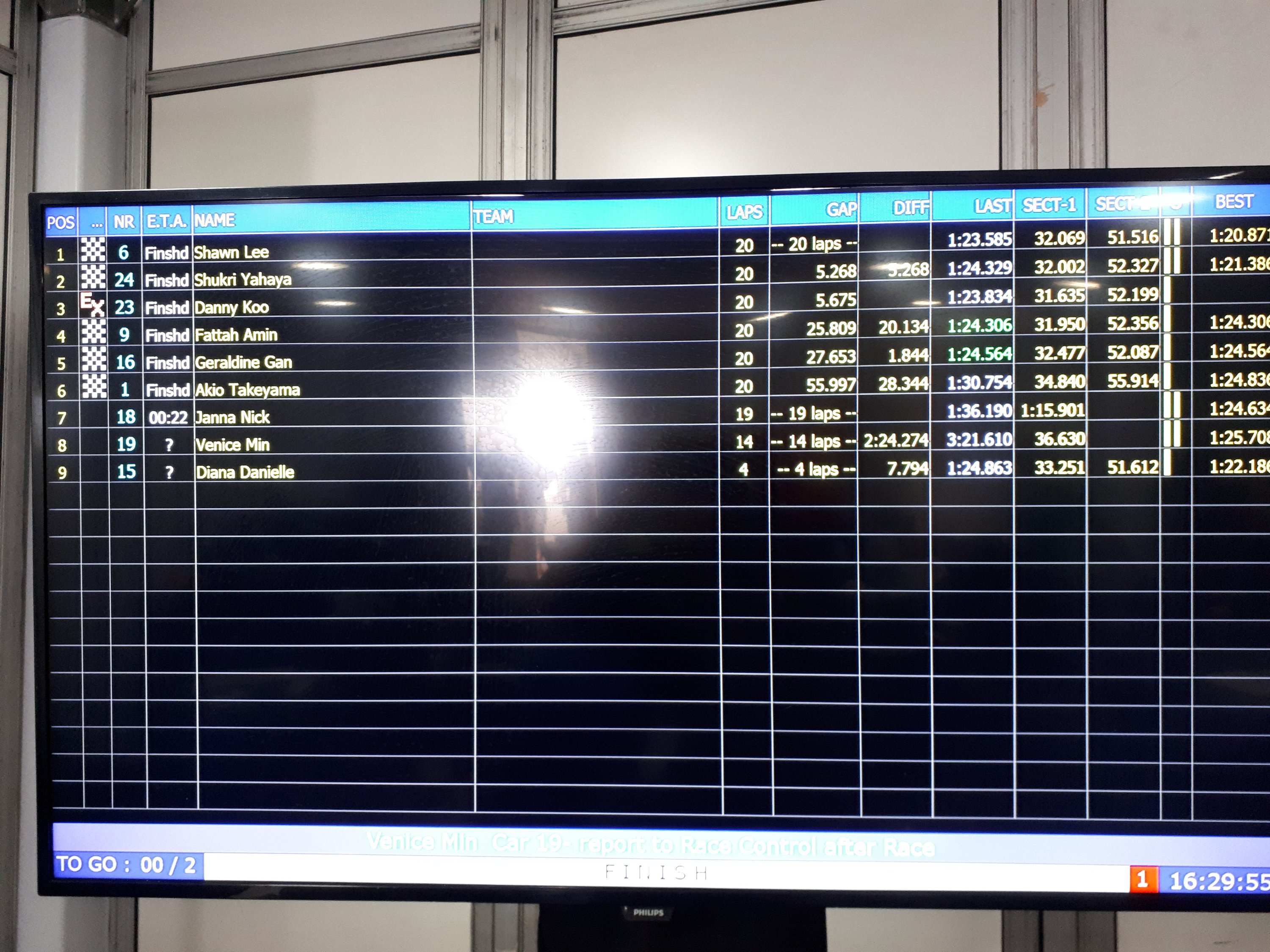


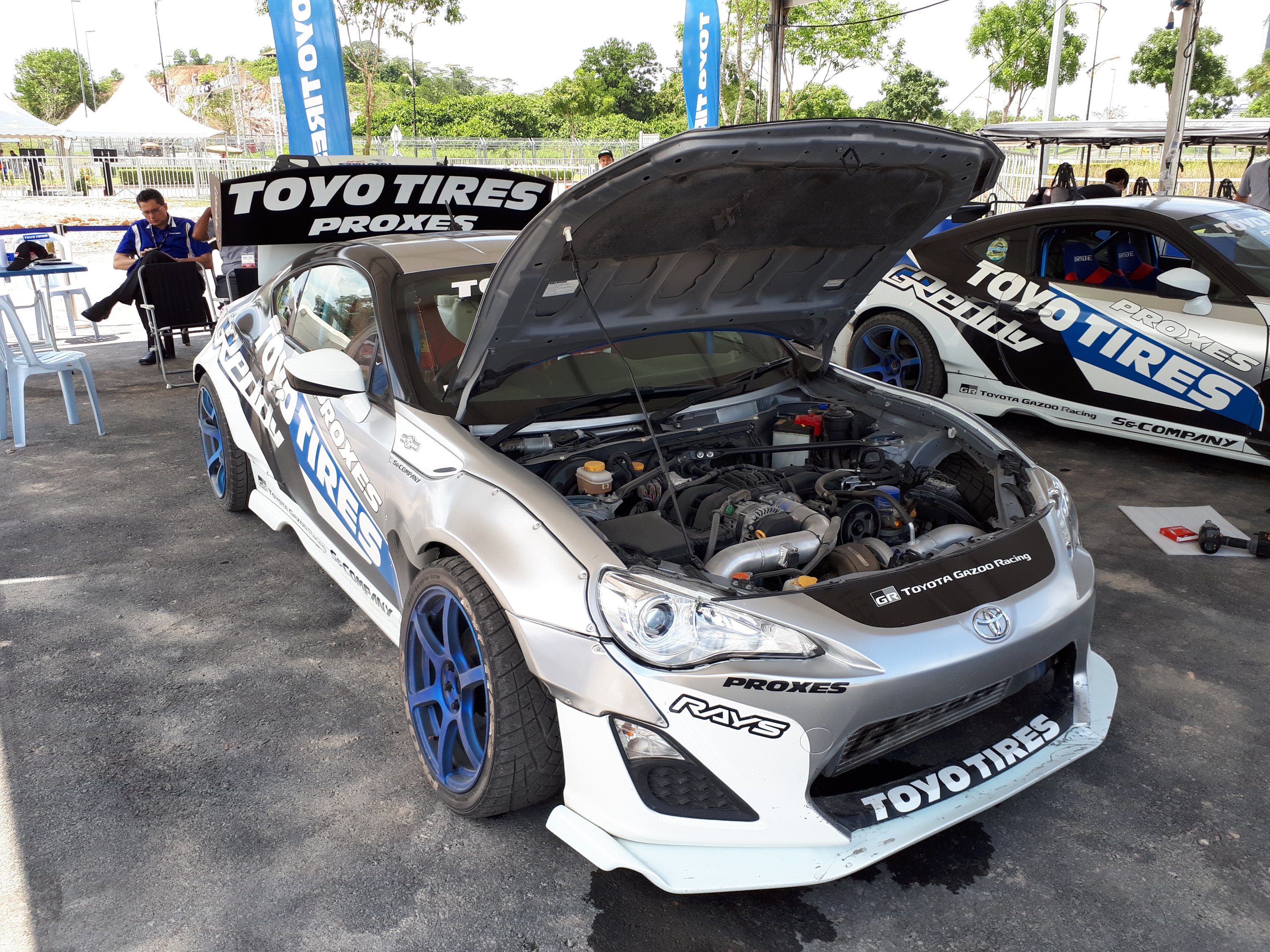
Did you ever think you’d see the day when a Kia would be compared to the likes of a BMW M6 and Porsche Panamera? How things have changed! Here’s more of the Stinger in action…
https://www.youtube.com/watch?v=tSWQTkbTYIQ
Be sure to catch our feature on how the S.Koreans have caught up with the Japanese, coming soon!
BMW Group Malaysia has introduced the first-ever BMW 5 Series Hybrid with eDrive Technology. Priced at a very respectable RM343,800, the all-new BMW 530e Sport is the fifth BMW iPerformance model to be introduced in the country, further reinforcing the premium automaker’s expertise in Plug-in Hybrid Technology.
Raymond Tan, Head of Sales, BMW Malaysia (above, right) said, “The All-New BMW 5 Series now offers eDrive Technology, an innovation taken from the Mobility of the Future – BMW i. More than this, however, is the fact that the All-New BMW 530e Sport also increases our portfolio of premium Plug-In Hybrid vehicles here, enabling us to offer the largest portfolio offering by any automaker in the country and to further demonstrate our commitment to Visionary Mobility in Malaysia.”
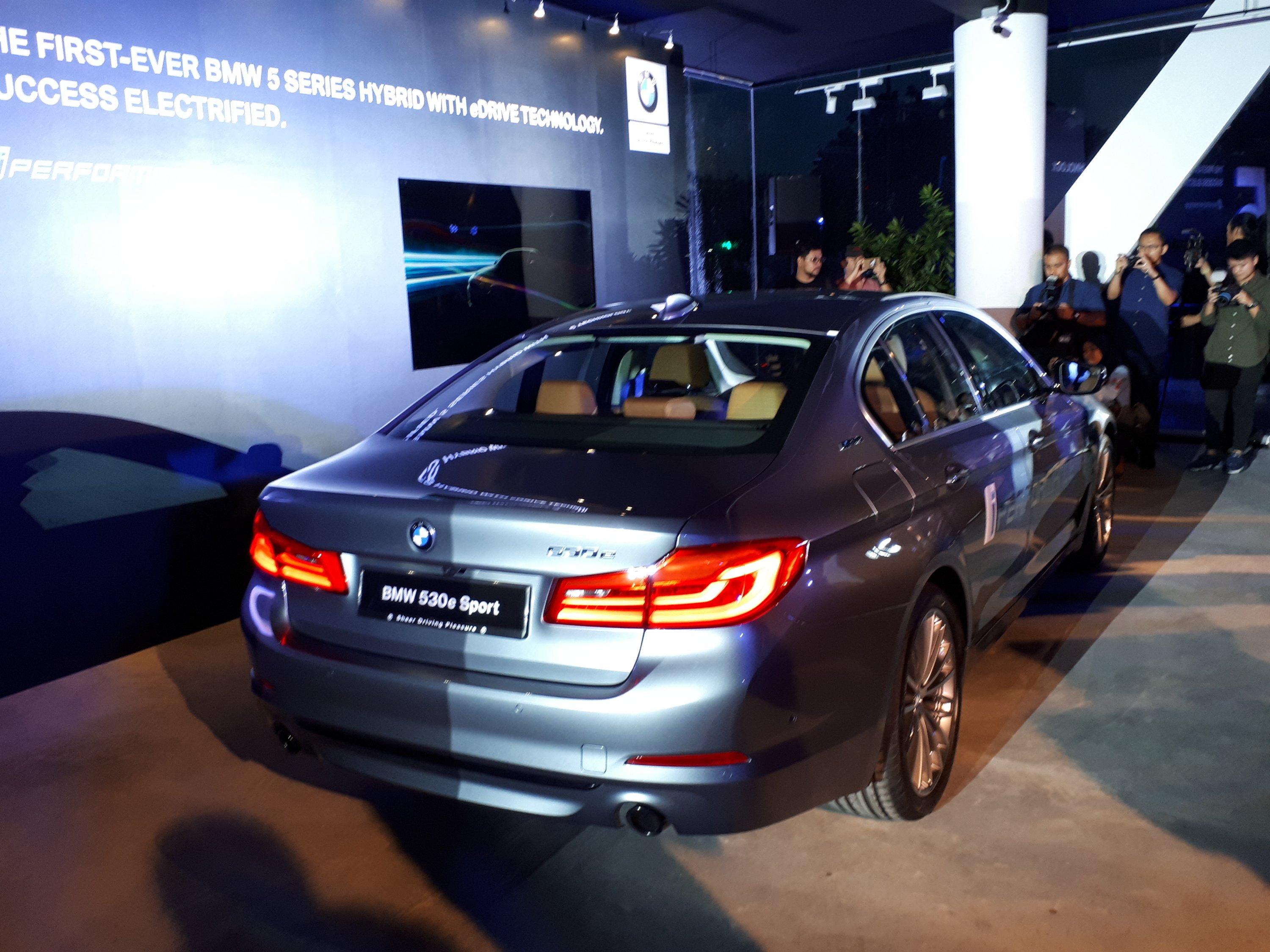 Charting more than half of BMW Malaysia’s total sales volume in 2017 with a profound 55% units of BMW Hybrid with eDrive Technology delivered, BMW Group Malaysia has a stronghold as the most successful premium hybrid brand in Malaysia. Tan said, “In terms of model mix share, we are also proud to share that 55% of our total models for the country are hybrid vehicles with eDrive technology. This also makes us fifth in the world in terms of deliveries of plug-in hybrid vehicles.”
Charting more than half of BMW Malaysia’s total sales volume in 2017 with a profound 55% units of BMW Hybrid with eDrive Technology delivered, BMW Group Malaysia has a stronghold as the most successful premium hybrid brand in Malaysia. Tan said, “In terms of model mix share, we are also proud to share that 55% of our total models for the country are hybrid vehicles with eDrive technology. This also makes us fifth in the world in terms of deliveries of plug-in hybrid vehicles.”
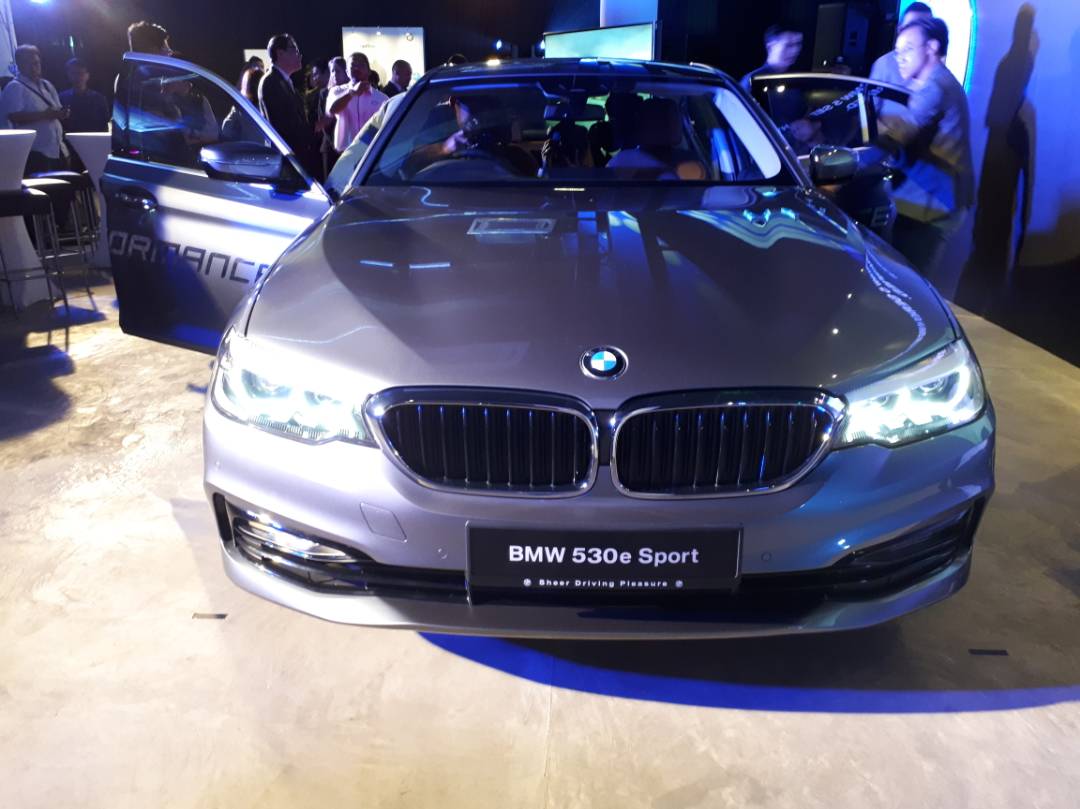 In the details, BMW Group Malaysia set an all-time high sales record for the BMW X5 xDrive40e by delivering over 3,000 units in 2017 alone, making Malaysia the second largest market after America for the model.
In the details, BMW Group Malaysia set an all-time high sales record for the BMW X5 xDrive40e by delivering over 3,000 units in 2017 alone, making Malaysia the second largest market after America for the model.
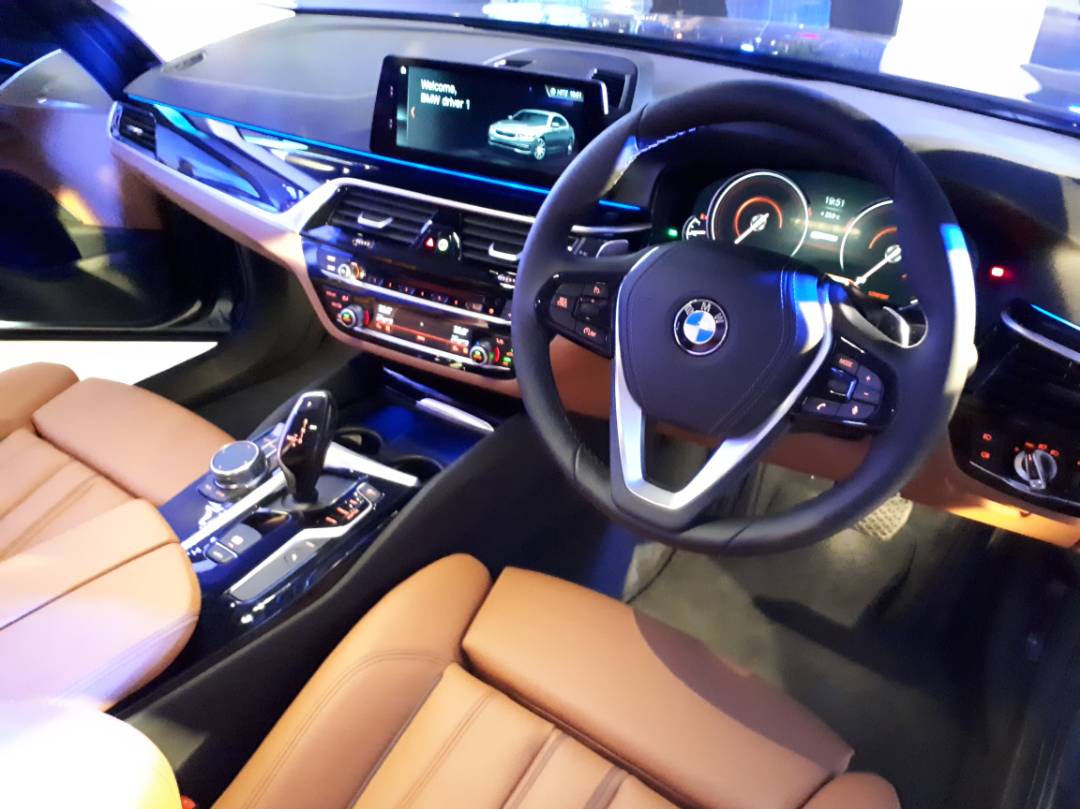 Malaysia is also the third largest market for the BMW 330e and the BMW 740Le xDrive with over 2,400 units and over 450 units delivered respectively in 2017. “The All-New BMW 530e Sport will be a meaningful addition to our iPerformance portfolio and we are confident it will further underpin us as leaders in shaping mobility of the future here in Malaysia,” said Tan.
Malaysia is also the third largest market for the BMW 330e and the BMW 740Le xDrive with over 2,400 units and over 450 units delivered respectively in 2017. “The All-New BMW 530e Sport will be a meaningful addition to our iPerformance portfolio and we are confident it will further underpin us as leaders in shaping mobility of the future here in Malaysia,” said Tan.
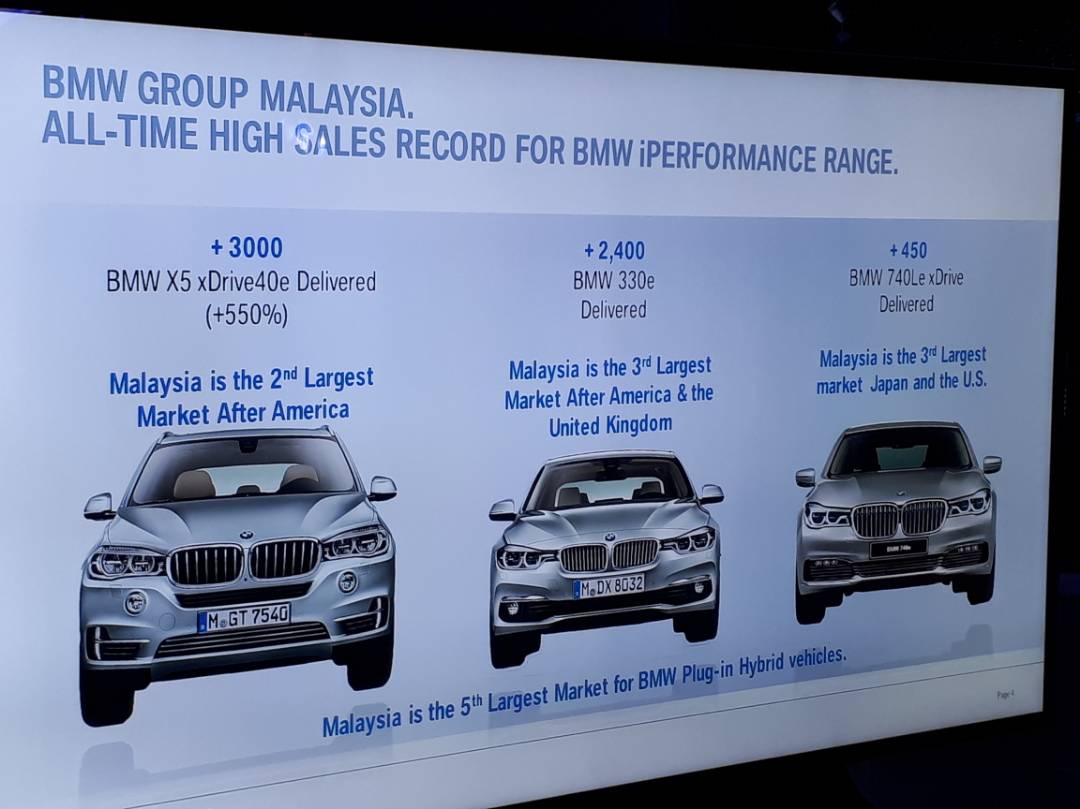 BMW Group Malaysia continues to be committed to Malaysia’s plan of reducing its carbon intensity by 40% by 2020. This was first announced in 2014 at the UN Climate Summit in New York and reiterated in 2016 at the Paris Agreement of the 21stConference of Parties (COP21).
BMW Group Malaysia continues to be committed to Malaysia’s plan of reducing its carbon intensity by 40% by 2020. This was first announced in 2014 at the UN Climate Summit in New York and reiterated in 2016 at the Paris Agreement of the 21stConference of Parties (COP21).
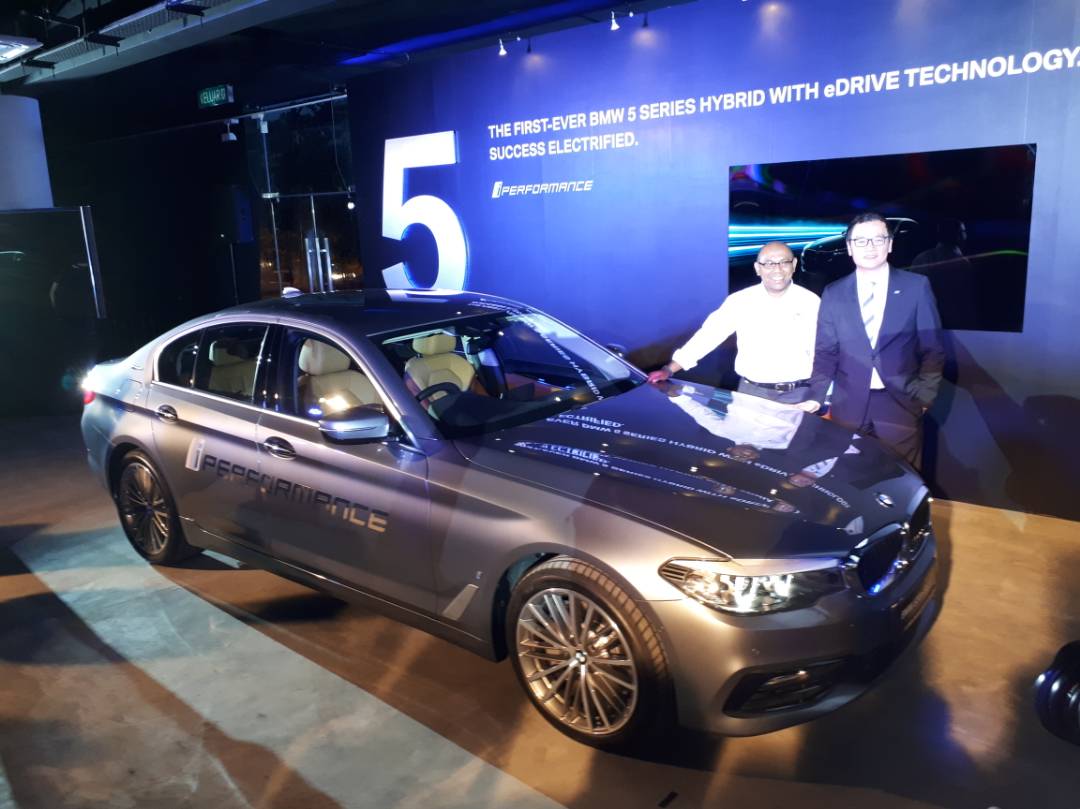 Speaking at the launch ceremony, Dr. Mohd Azman Zainul Abidin (above, left), Group Chief Executive Officer of Malaysian Green Technology Corporation said, “A key strategy for Malaysia to move towards low carbon mobility is through industry wide cooperation and partnerships. We at GreenTech Malaysia are pleased to have BMW Group Malaysia as a partner from the very beginning, to ensure necessary and sufficient infrastructure is provided to support the new innovation of Plug-in Hybrid technology and eventually Electro Mobility. This will increase consumer confidence in the viability of electric vehicles and plug-in-hybrid vehicles. It is reassuring to see BMW Group Malaysia taking initiative to further propel Malaysia into a futuristic future of electromobility, while we continue to grow the number of ChargEV charging stations across the country.”
Speaking at the launch ceremony, Dr. Mohd Azman Zainul Abidin (above, left), Group Chief Executive Officer of Malaysian Green Technology Corporation said, “A key strategy for Malaysia to move towards low carbon mobility is through industry wide cooperation and partnerships. We at GreenTech Malaysia are pleased to have BMW Group Malaysia as a partner from the very beginning, to ensure necessary and sufficient infrastructure is provided to support the new innovation of Plug-in Hybrid technology and eventually Electro Mobility. This will increase consumer confidence in the viability of electric vehicles and plug-in-hybrid vehicles. It is reassuring to see BMW Group Malaysia taking initiative to further propel Malaysia into a futuristic future of electromobility, while we continue to grow the number of ChargEV charging stations across the country.”
Design: charismatic athleticism.
The All-New BMW 530e Sport is the most innovative model in its class and offers the full wealth of BMW 5 Series driver assistance systems, in all modes including eDrive. The premium business sedan promises to serve up the dynamic driving experience, for which the BMW brand is renowned, combined with outstanding efficiency and seamless everyday practicality.
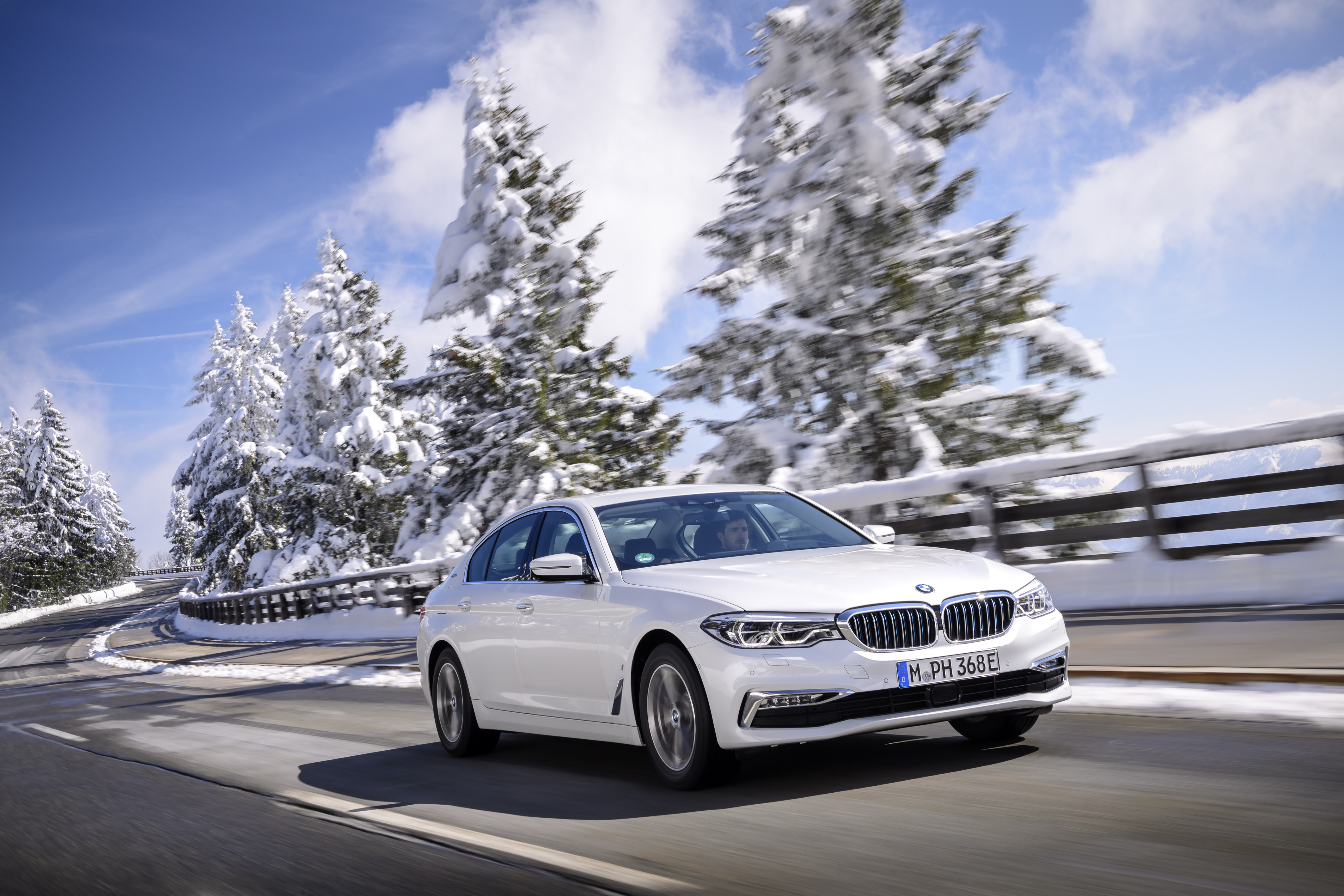 Starting with its signature feature, the air stream kidney grille is designed to further empower aerodynamics – opening and closing to adapt to different situations. The All-New BMW 530e Sport is offered in Sport Line and features LED headlights for both low-beam and high-beam, side lights, as well as daytime running lights, which complements the elegant high-gloss black front bumper, ready to turn heads on the road. The ‘530e’ badge is the most noticeable identifying feature of the plug-in hybrid variant. The highly visible i logo above the air breather as well as the eDrive logo at the C-Pillar provides insight to the fact that the premium business sedan receives technology know-how from the BMW-i sub brand.
Starting with its signature feature, the air stream kidney grille is designed to further empower aerodynamics – opening and closing to adapt to different situations. The All-New BMW 530e Sport is offered in Sport Line and features LED headlights for both low-beam and high-beam, side lights, as well as daytime running lights, which complements the elegant high-gloss black front bumper, ready to turn heads on the road. The ‘530e’ badge is the most noticeable identifying feature of the plug-in hybrid variant. The highly visible i logo above the air breather as well as the eDrive logo at the C-Pillar provides insight to the fact that the premium business sedan receives technology know-how from the BMW-i sub brand.
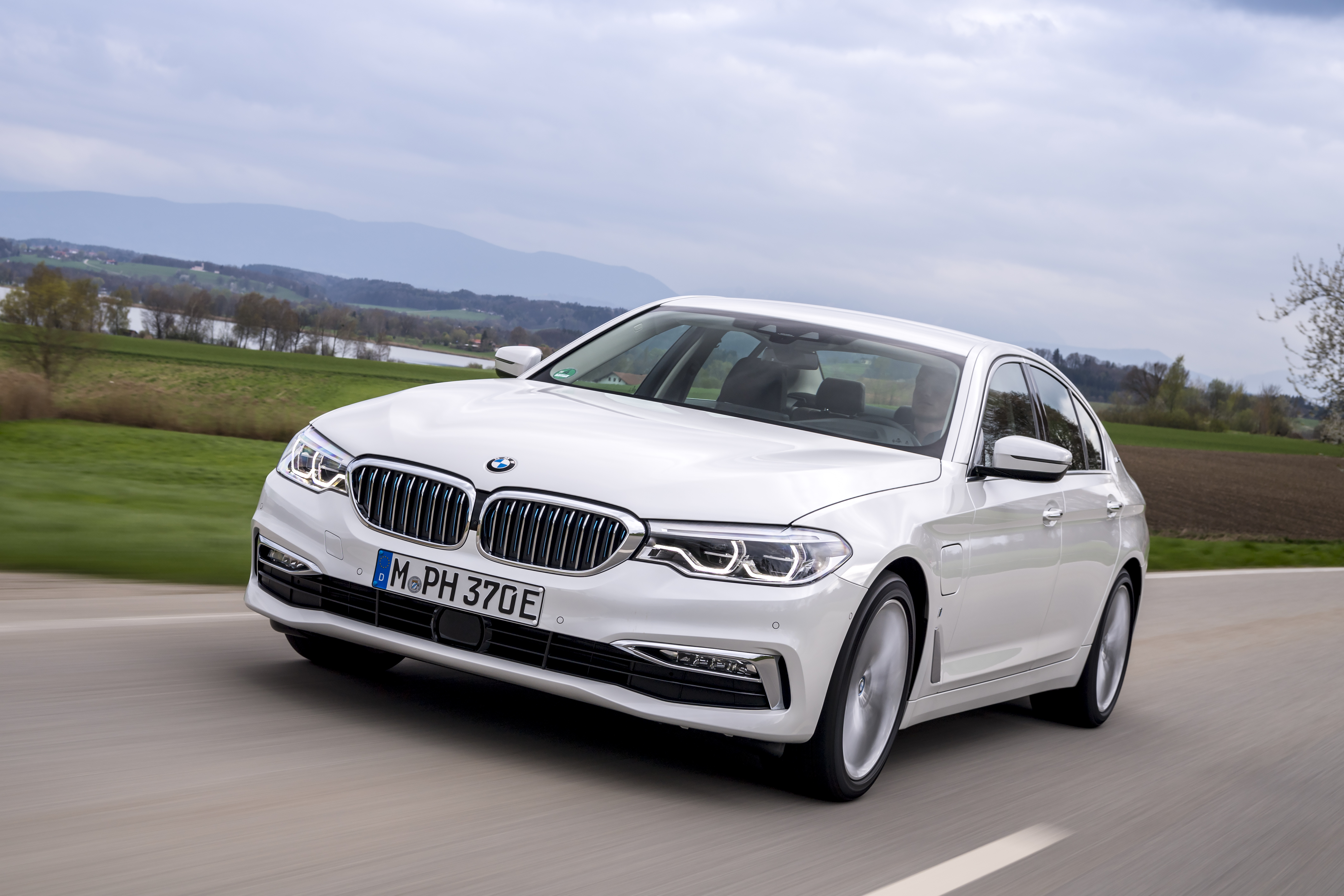 For additional convenience, the All-New BMW 530e Sport offers Comfort Access – providing a seamless owner experience without having to reach for your car key. From unlocking your doors to starting your engine, the All-New BMW 530e Sport is designed to be aware of your car key’s unique sensors, which resonates solely with the car’s internal system; as such, no two keys are alike. To further emphasise on convenience, the All-New BMW 530e Sport also provides owners contactless boot operation.
For additional convenience, the All-New BMW 530e Sport offers Comfort Access – providing a seamless owner experience without having to reach for your car key. From unlocking your doors to starting your engine, the All-New BMW 530e Sport is designed to be aware of your car key’s unique sensors, which resonates solely with the car’s internal system; as such, no two keys are alike. To further emphasise on convenience, the All-New BMW 530e Sport also provides owners contactless boot operation.
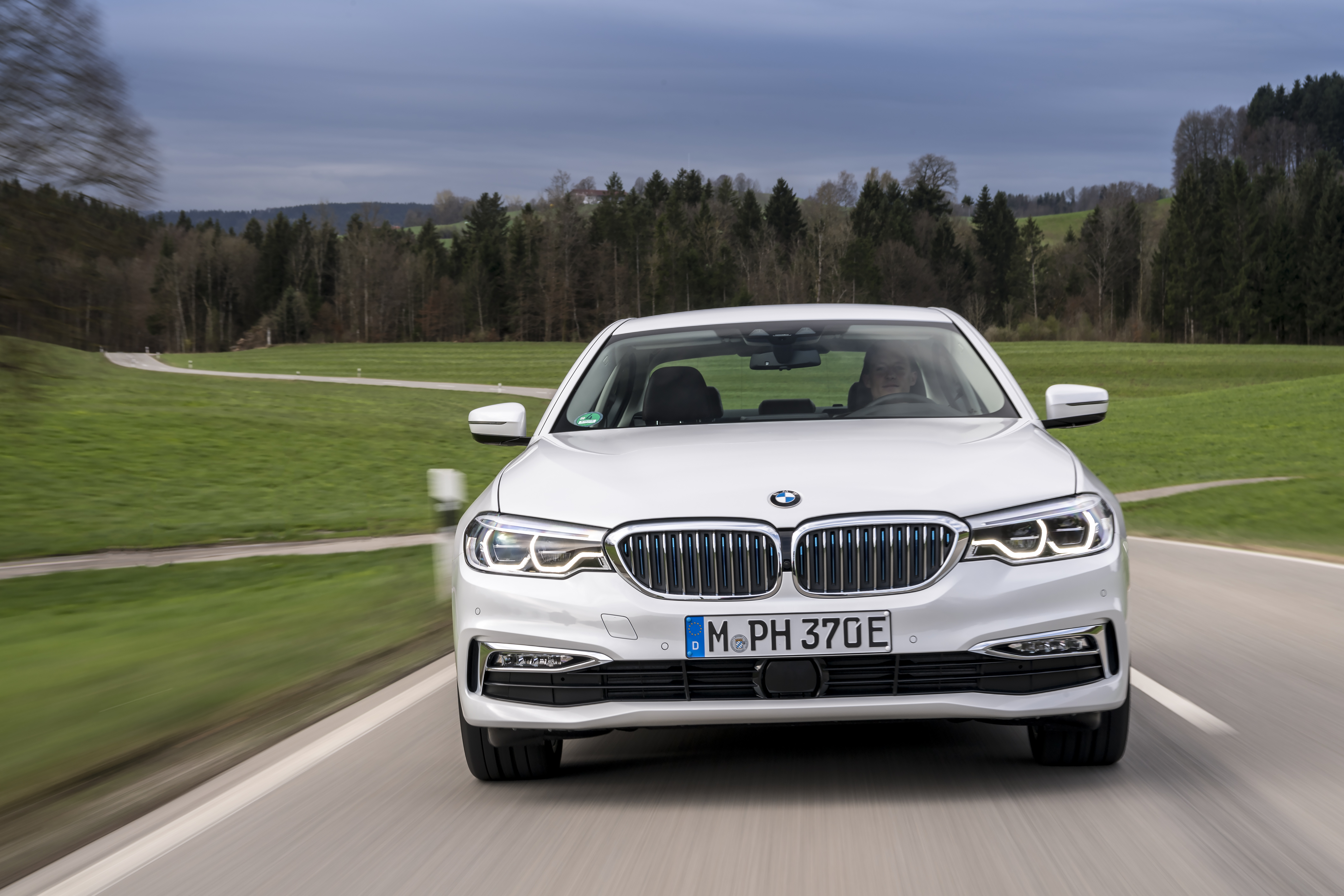 Accentuating its sporty vibe to the rear of the new premium business sedan from BMW is the double round exhaust tailpipe on both left and right of the eDrive variant. Fitted with 19” V-Spoke light alloy wheels, the All-New BMW 530e Sport hints at an agile driving experience.
Accentuating its sporty vibe to the rear of the new premium business sedan from BMW is the double round exhaust tailpipe on both left and right of the eDrive variant. Fitted with 19” V-Spoke light alloy wheels, the All-New BMW 530e Sport hints at an agile driving experience.
Dynamic interaction enabling powerful delivery.
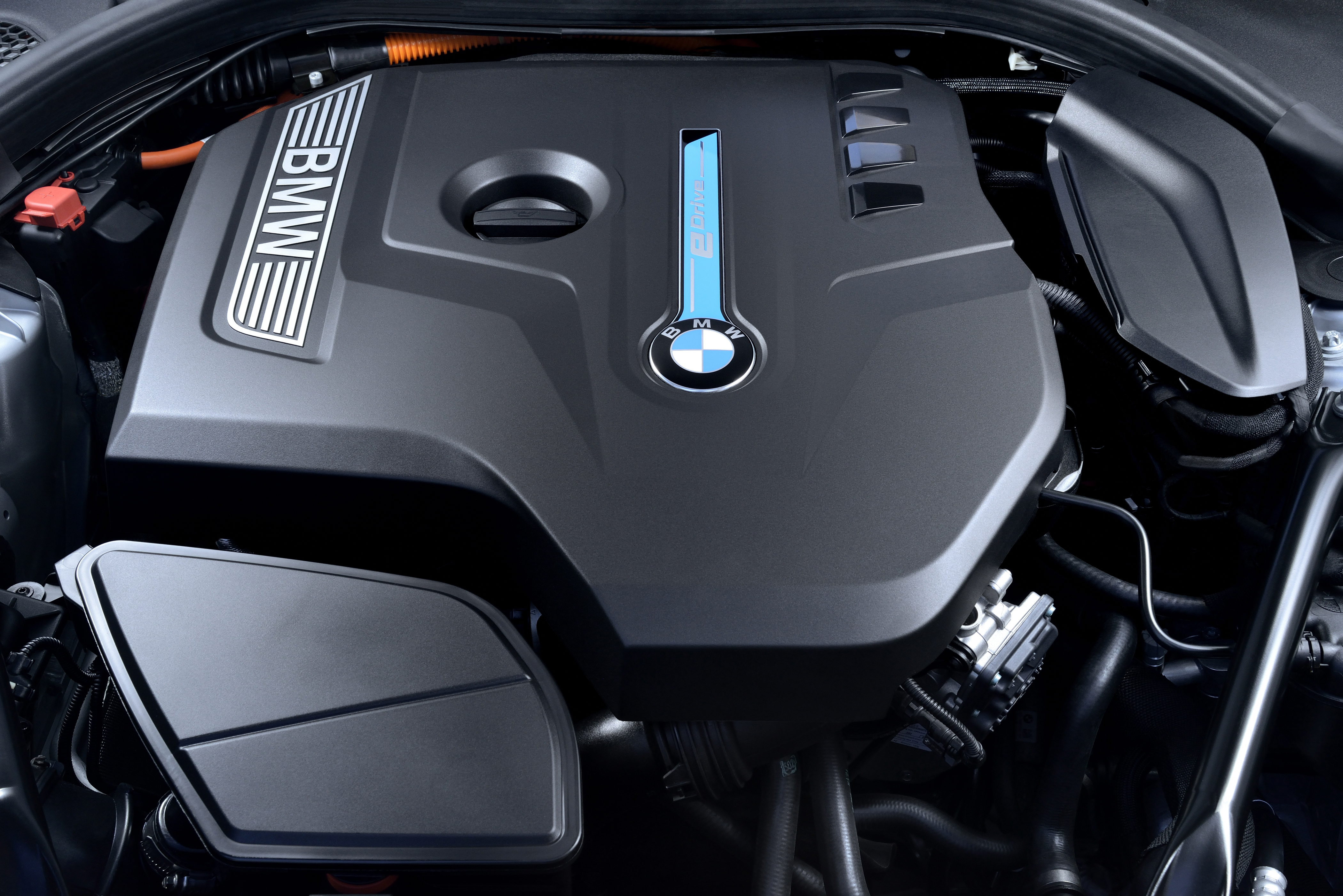 Powering the All-New BMW 530e Sport is the latest-generation inline 4-cylinder BMW TwinPower Turbo 2-litre petrol engine which generates 184hp and 320 Nm of torque. Combined with the BMW eDrive system’s state-of-the-art electric motor, the All-New BMW 530e Sport has an overall system output of 252hp and 420 Nm of torque, enabling the car to sprint from 0 to 100 km/h in 6.2 seconds. With a top speed of 235 km/h, the All-New BMW 530e Sport enjoys segment-leading figures of consuming only 2.0l/100km of fuel with a significantly low CO2 emission of 46g/km.
Powering the All-New BMW 530e Sport is the latest-generation inline 4-cylinder BMW TwinPower Turbo 2-litre petrol engine which generates 184hp and 320 Nm of torque. Combined with the BMW eDrive system’s state-of-the-art electric motor, the All-New BMW 530e Sport has an overall system output of 252hp and 420 Nm of torque, enabling the car to sprint from 0 to 100 km/h in 6.2 seconds. With a top speed of 235 km/h, the All-New BMW 530e Sport enjoys segment-leading figures of consuming only 2.0l/100km of fuel with a significantly low CO2 emission of 46g/km.
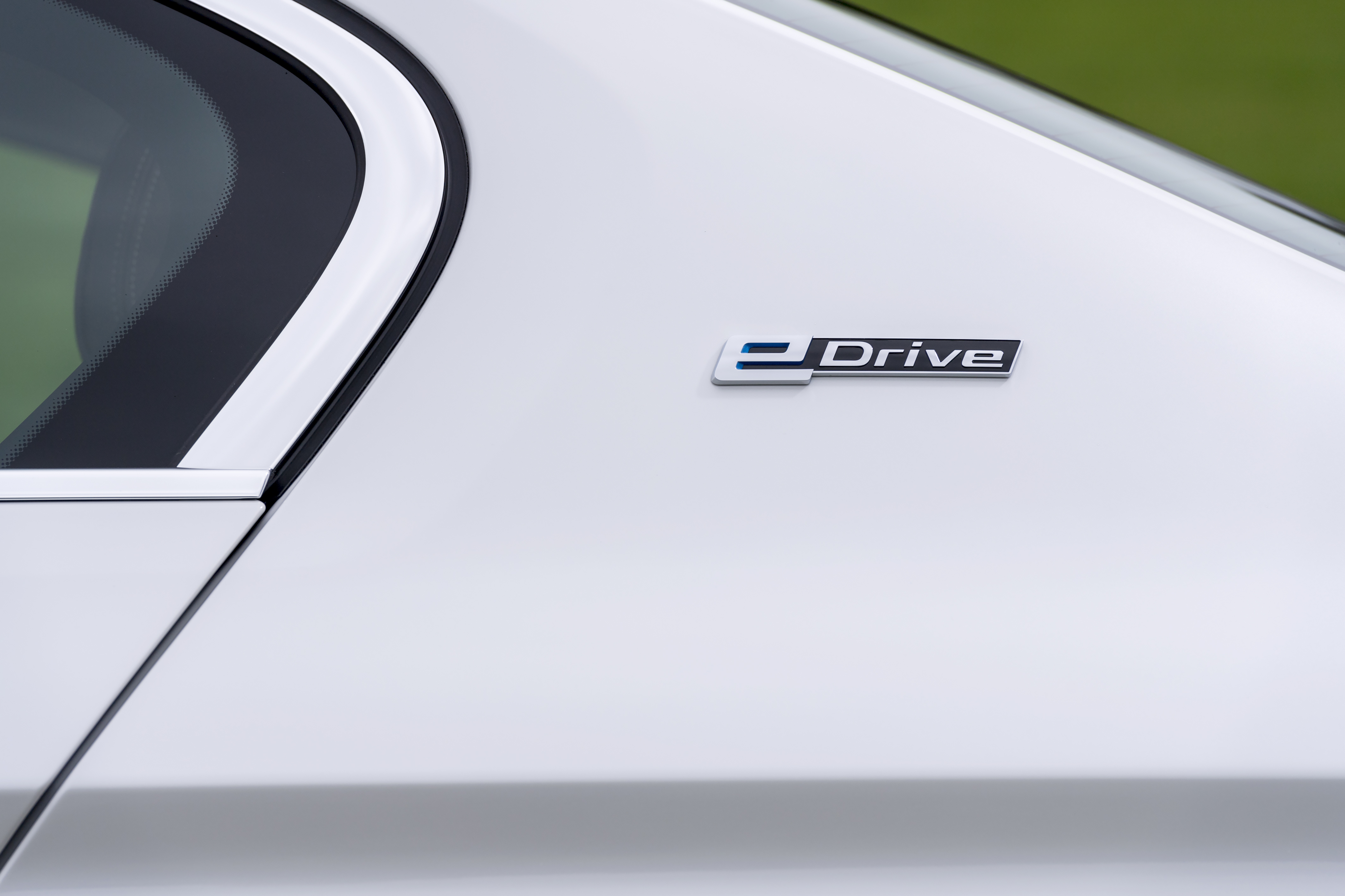 The electric drive boasts powerful efficiency with its combination of electric motor, lithium-ion high-performance battery, and intelligent energy management. The intelligent energy management optimises the effectiveness of the electric drivetrain and the high-performance battery with a predictive operating strategy. The All-New BMW 530e Sport offers an all-electric driving range of up to 48km with a maximum speed of up to 140km/h – the best in its segment.
The electric drive boasts powerful efficiency with its combination of electric motor, lithium-ion high-performance battery, and intelligent energy management. The intelligent energy management optimises the effectiveness of the electric drivetrain and the high-performance battery with a predictive operating strategy. The All-New BMW 530e Sport offers an all-electric driving range of up to 48km with a maximum speed of up to 140km/h – the best in its segment.
For the FULL press release on the new BMW 5-Series Hybrid eDrive, click this: Press Release – BMW Group Malaysia Introduces the First-Ever BMW 5 Series Hybrid with eDrive Technology
BMW 5-Series Hybrid eDrive FULL Specs & Price List:
BMW 530e Spec Sheet_Pen Malaysia
BMW 530e Spec Sheet_East Malaysia
LATEST! Nationwide campaign offering special ownership programmes for BMW models and BMW iPerformance models.
Additional special ownership programmes for BMW vehicles and BMW iPerformance range is also offered at BMW Malaysia’s ongoing nationwide campaign, held at all authorised BMW dealerships. This includes special financing interest rates from 0.88% as well as attractive rebates across a wide range of BMW models.
New owners of the BMW iPerformance models – BMW 330e M Sport, BMW X5 xDrive 40e, BMW 740Le, and now the All-New BMW 530e Sport will also have unlimited, complimentary access for a whole year for the ChargeNow mobility services via the ChargEV platform in collaboration with GreenTech Malaysia. The special offer also comes with a complimentary BMW i AC Fast Charging Cable. Specifically for new owners of the BMW X5 xDrive40e and BMW 740Le xDrive, the new programme by BMW Malaysia offers a complimentary BMW i Wallbox Plus, with RFID detection and can be managed and controlled remotely using the BMW iV smartphone app. The campaign ends 31st March 2018.
It’s here! Volvo Car Malaysia has finally unveiled the long-awaited successor to its Premium Mid-Sized SUV with the introduction of the new Volvo XC60 T8 Twin Engine, fully imported from Sweden.
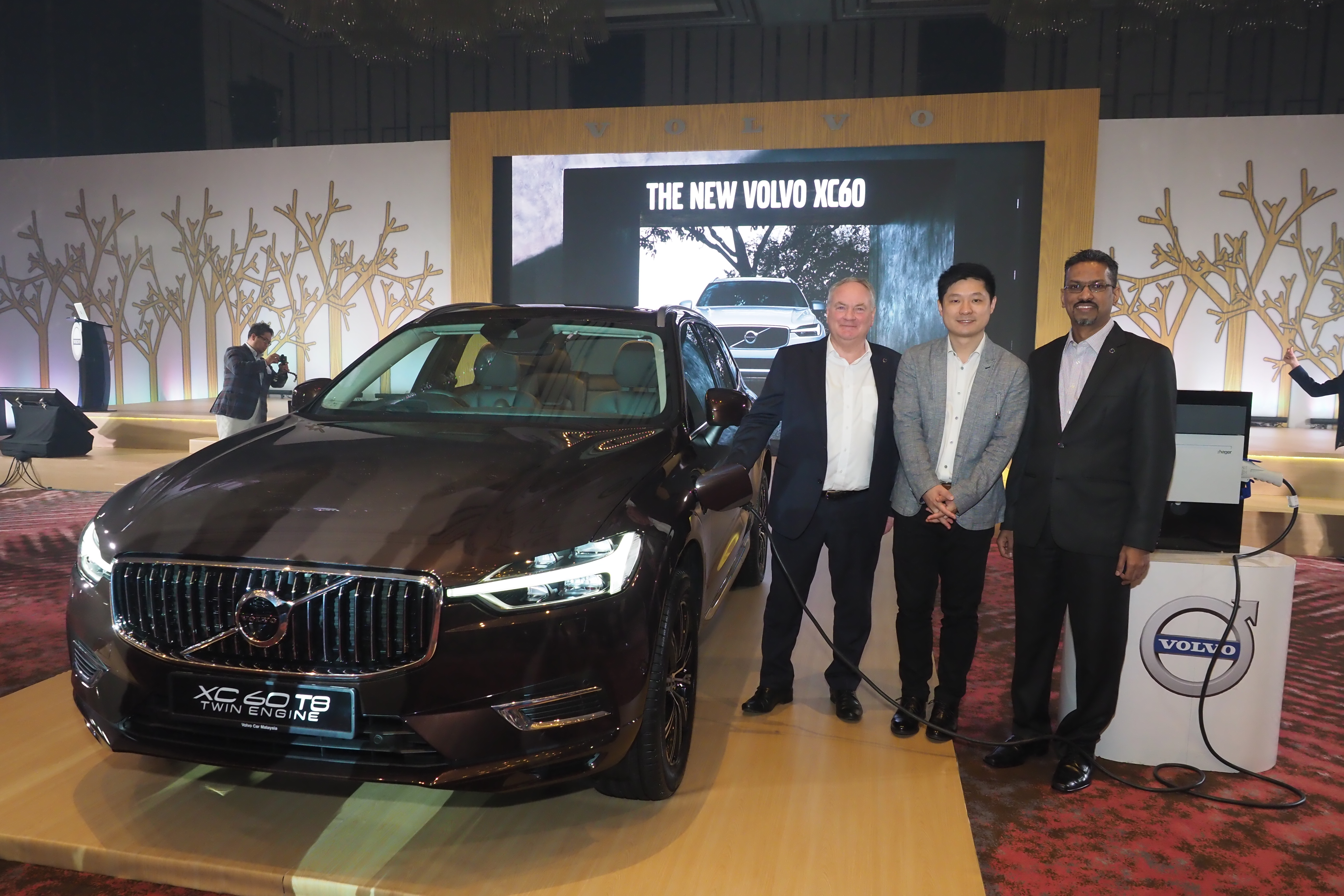
The new model will replace the original XC60 which has sold nearly a million units globally and represents 30 per cent of Volvo’s total global sales. Here’s the official launch earlier today…
“We have a strong heritage in crafting stylish and dynamic SUVs that feature the latest in technology – the new XC60 will be no exception,” said Lennart Stegland, Managing Director, Volvo Car Malaysia (below).
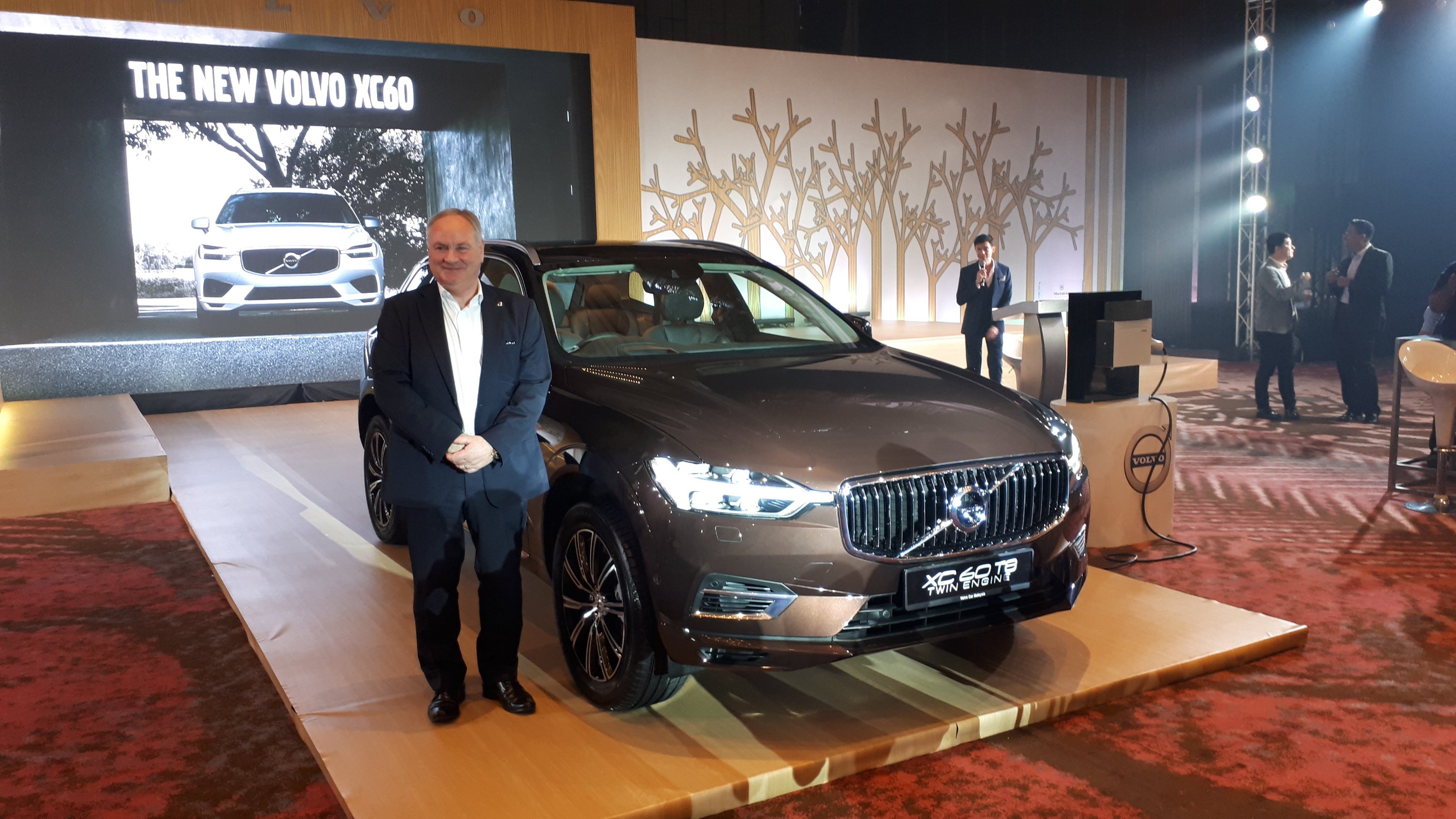 Built on the Scalable Product Architecture (SPA) platform, the new XC60 will maintain the beautiful proportions of its larger sibling but with a more expressive design on both the exterior and interior.
Built on the Scalable Product Architecture (SPA) platform, the new XC60 will maintain the beautiful proportions of its larger sibling but with a more expressive design on both the exterior and interior.
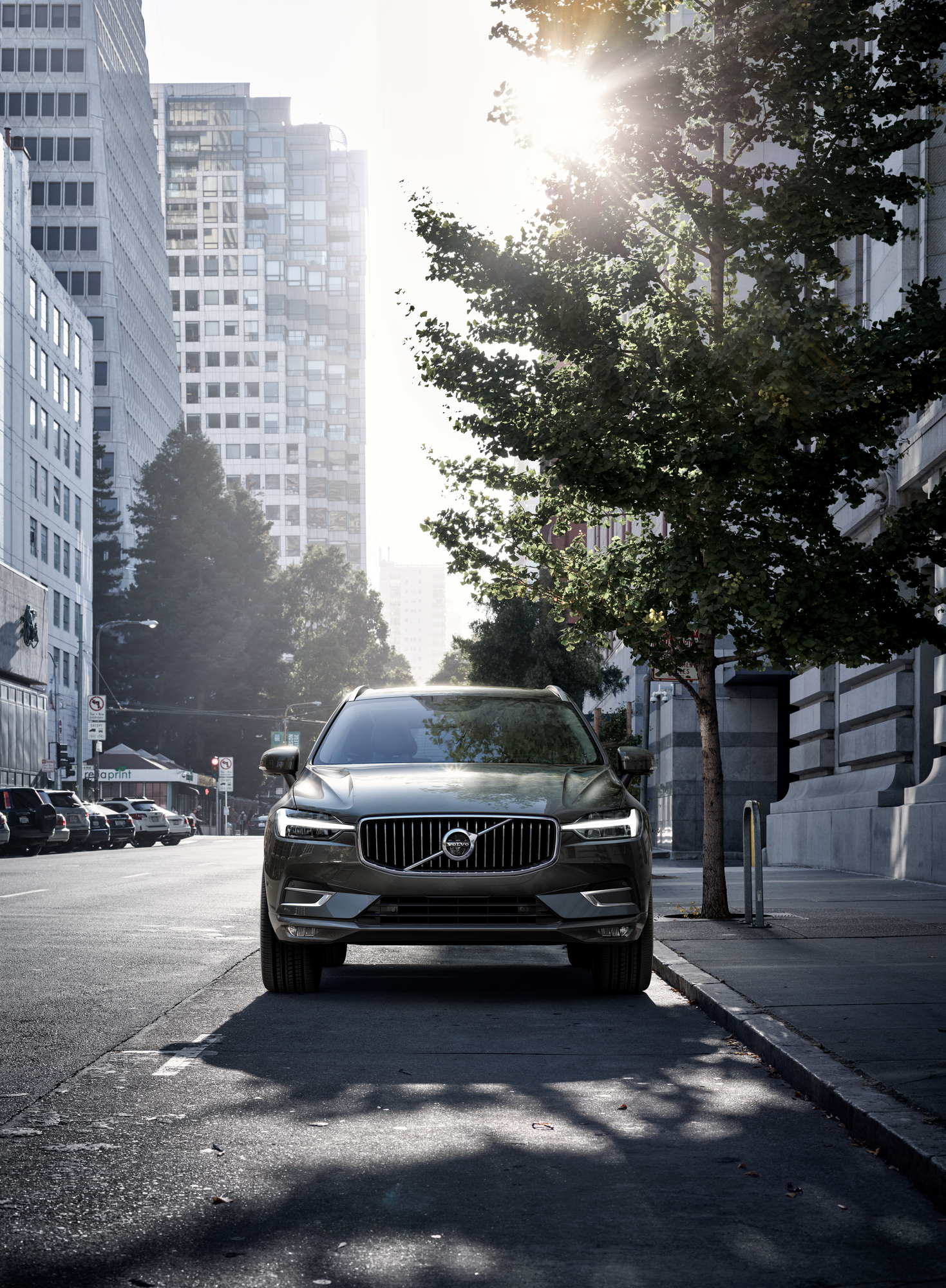 “The exterior has an athletic sculpture with a subtle, timeless quality. The interior is a masterful composition of well-resolved architecture and beautiful materials, all perfectly blended together,” added Stegland.
“The exterior has an athletic sculpture with a subtle, timeless quality. The interior is a masterful composition of well-resolved architecture and beautiful materials, all perfectly blended together,” added Stegland.
Want to see it in action? Check this out!
More on the new Volvo XC60…
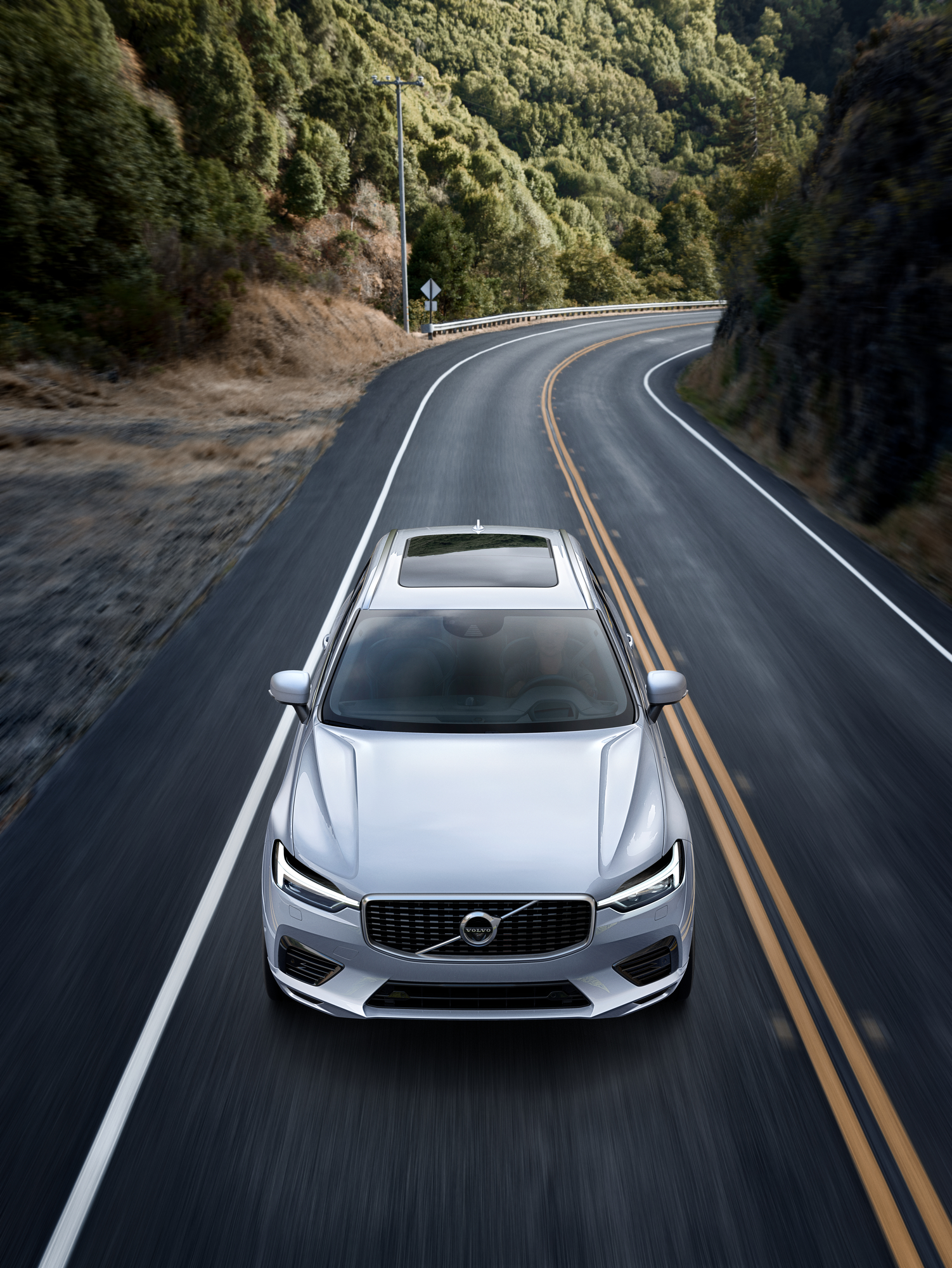 Scoring a near perfect score of 98 per cent in the Adult Occupant category and 95 per cent in the Large Off-Road vehicle class, the new XC60 has been awarded Best Overall Performance by the prestigious Euro NCAP 2017.
Scoring a near perfect score of 98 per cent in the Adult Occupant category and 95 per cent in the Large Off-Road vehicle class, the new XC60 has been awarded Best Overall Performance by the prestigious Euro NCAP 2017.
 This score was possible thanks to the new XC60’s ability to benefit and improve on the safety technologies of Volvo’s 90s Range – the first range of cars built on the SPA platform. Volvo calls its safety technologies which includes its driver support and active safety systems, IntelliSafe.
This score was possible thanks to the new XC60’s ability to benefit and improve on the safety technologies of Volvo’s 90s Range – the first range of cars built on the SPA platform. Volvo calls its safety technologies which includes its driver support and active safety systems, IntelliSafe.
“Volvo has a vision that by the year 2020, no one should be killed or seriously injured in a new Volvo car – this recent award underlines our leadership in safety technologies and makes the new XC60 one of the safest cars that we have ever made,” said Stegland.
 IntelliSafe, which comes standard in the new XC60, will include the usual staple of active, preventive and protective safety systems such as City Safety (Autonomous Emergency Braking), BLIS (Blind Spot Information System), and Rear Collision Warning and Mitigation, just to name a few.
IntelliSafe, which comes standard in the new XC60, will include the usual staple of active, preventive and protective safety systems such as City Safety (Autonomous Emergency Braking), BLIS (Blind Spot Information System), and Rear Collision Warning and Mitigation, just to name a few.
 Both City Safety and BLIS now features Steer Assist, a system that provides automatic steering assistance that will – when required – avoid potential collisions. City Safety detects and helps avoid collisions with other vehicles, pedestrians, cyclists, and large animals.
Both City Safety and BLIS now features Steer Assist, a system that provides automatic steering assistance that will – when required – avoid potential collisions. City Safety detects and helps avoid collisions with other vehicles, pedestrians, cyclists, and large animals.
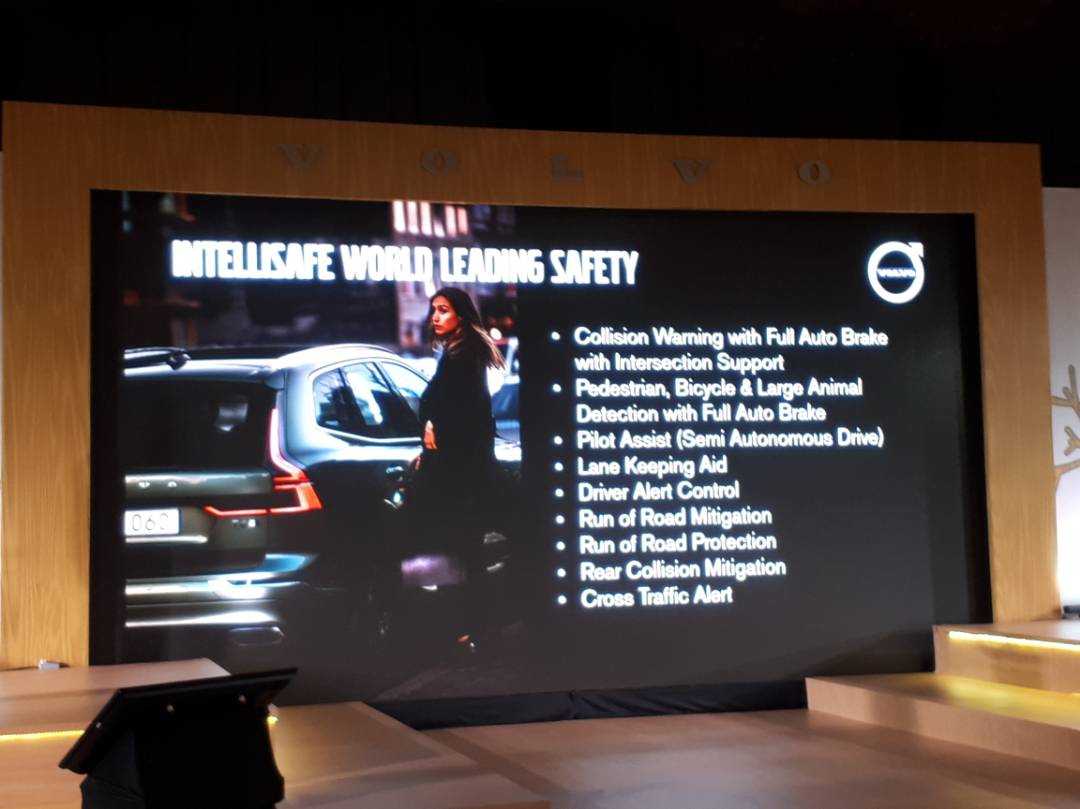 Oncoming Lane Mitigation is a new system included in the new XC60; it helps drivers avoid collisions with vehicles in an oncoming lane by alerting, and if necessary, provide automatic steering assistance to guide the car out of the path of the oncoming vehicle.
Oncoming Lane Mitigation is a new system included in the new XC60; it helps drivers avoid collisions with vehicles in an oncoming lane by alerting, and if necessary, provide automatic steering assistance to guide the car out of the path of the oncoming vehicle.
Another defining feature included in the new XC60 is Volvo’s Pilot Assist – an advanced semi-autonomous driver assistance system which takes care of steering, acceleration and braking on well-marked roads up to 130 km/h, will also be available in the new XC60.
Here’s a quick 360-deg walk-around video, plus a look at the inside…
In terms of performance, the T8 Twin Engine, combines a turbocharged and supercharged petrol engine with an electric motor that independently drives the rear axle to produce an impressive combined output of 407 hp (320 hp internal combustion engine + 87 hp electric motor) and 640 Nm (400 Nm internal combustion engine + 240 Nm electric motor) of torque.
But it’s really quiet in Electric mode, have a look & listen…
The performance figures translates to a century sprint of only 5.3 seconds and a very efficient 2.1 litres of fuel consumed for every 100 km travelled and a pure electric range of 45 km (NEDC Hybrid Combined Cycle) from a 10.4 kWh hybrid battery which is centrally located in the tunnel of the car.
 The XC60 T8 Twin Engine will be offered in the Inscription and Inscription Plus trim level, with the latter being equipped with the industry-leading sound system, Premium Sound by Bowers & Wilkins; a 15-speaker sound system that supplies an astonishing 1,100 watts through a 10-channel Class-D amplifier.
The XC60 T8 Twin Engine will be offered in the Inscription and Inscription Plus trim level, with the latter being equipped with the industry-leading sound system, Premium Sound by Bowers & Wilkins; a 15-speaker sound system that supplies an astonishing 1,100 watts through a 10-channel Class-D amplifier.
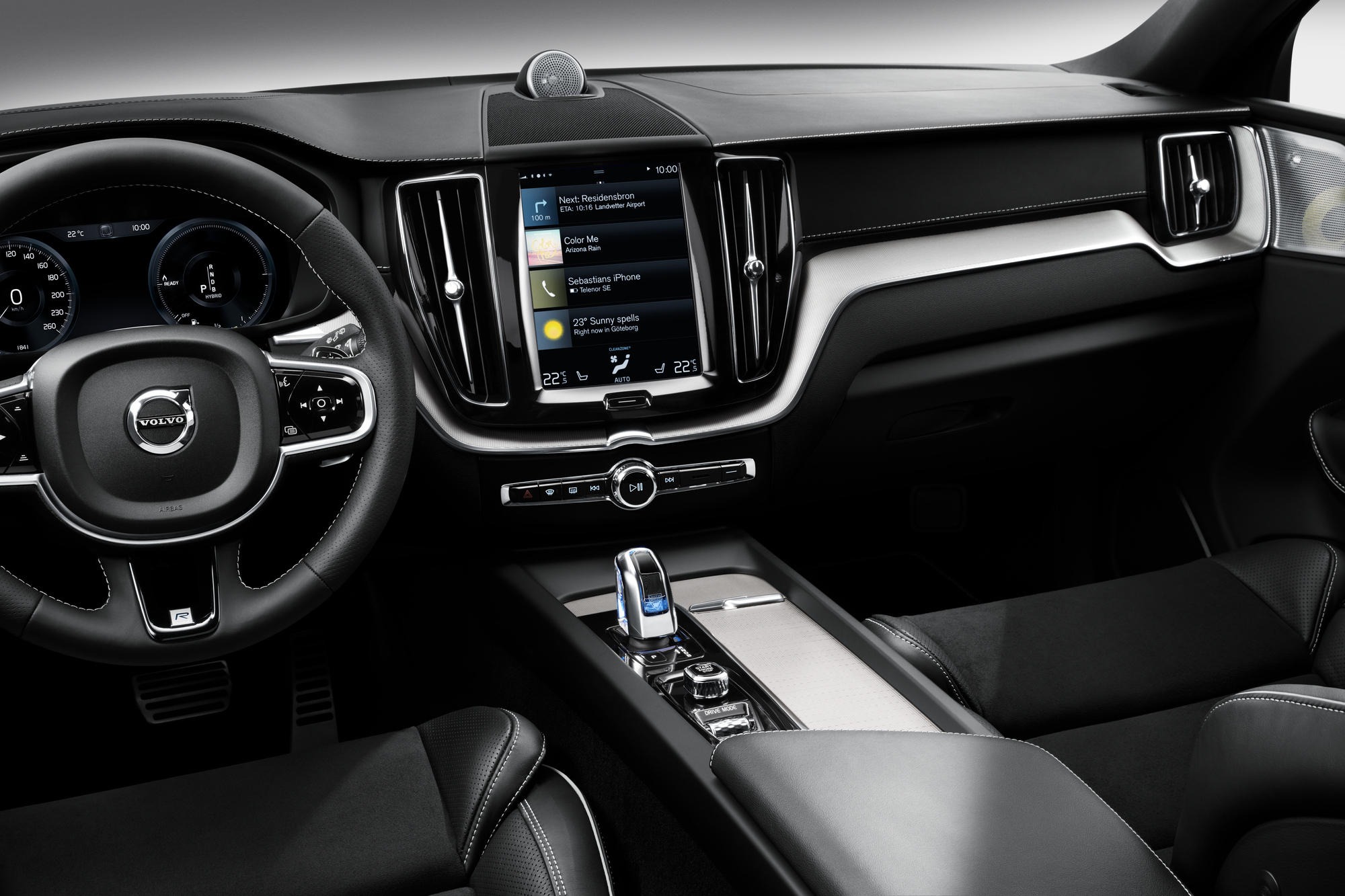 The fully-imported (CBU), new XC60 T8 Twin Engine Inscription Plus is priced at RM373,888 (on-the-road without insurance, including all applicable taxes) to complement the locally assembled range for the new XC60 that will be introduced at a later date.
The fully-imported (CBU), new XC60 T8 Twin Engine Inscription Plus is priced at RM373,888 (on-the-road without insurance, including all applicable taxes) to complement the locally assembled range for the new XC60 that will be introduced at a later date.
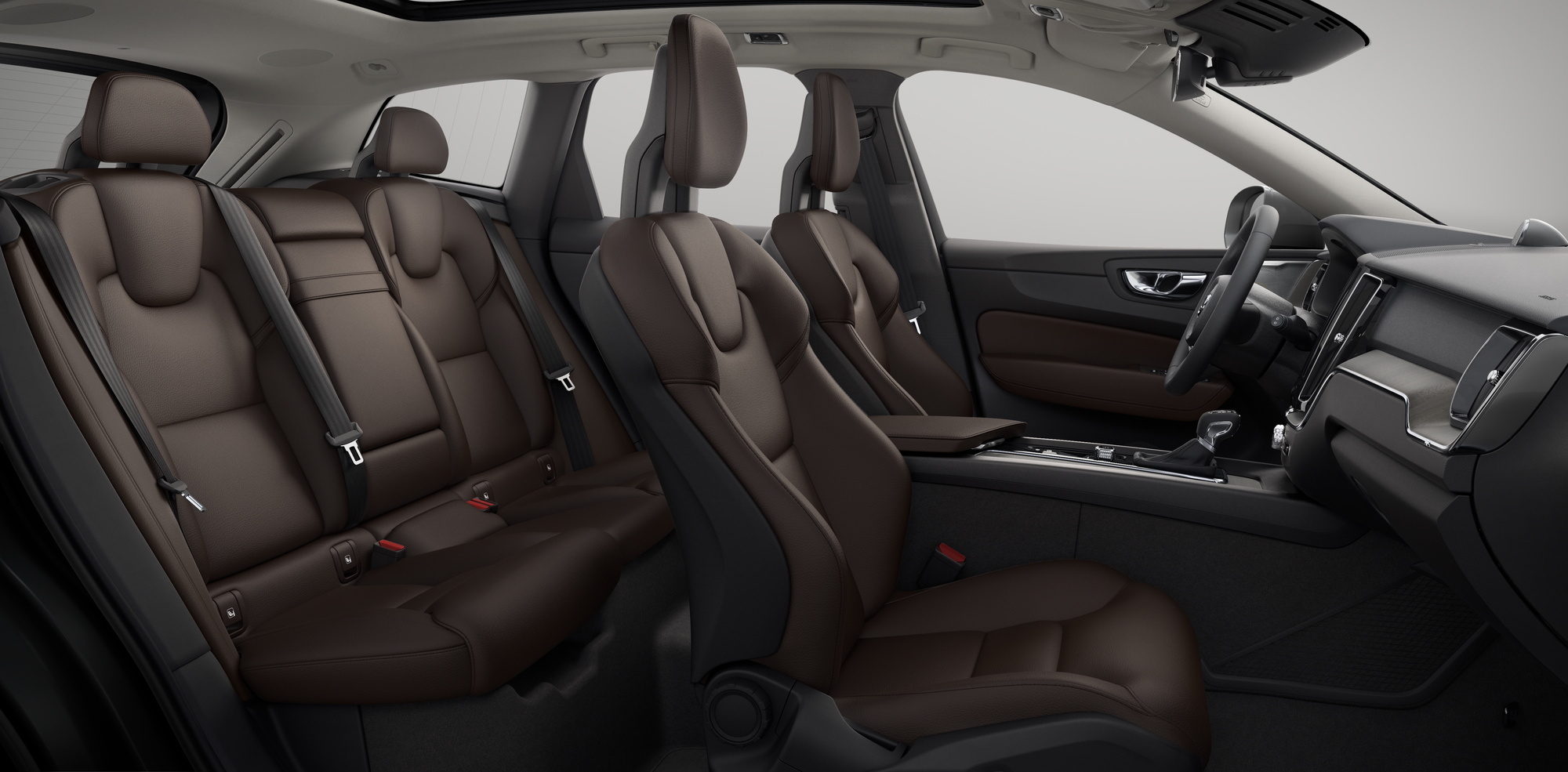 The locally-assembled (CKD) XC60 will be offered in two engine variants, namely, the T8 Twin Engine and T5. The T8 Twin Engine will be offered in two trim levels – Inscription and Inscription Plus; while the T5 will be offered in a single trim level.
The locally-assembled (CKD) XC60 will be offered in two engine variants, namely, the T8 Twin Engine and T5. The T8 Twin Engine will be offered in two trim levels – Inscription and Inscription Plus; while the T5 will be offered in a single trim level.
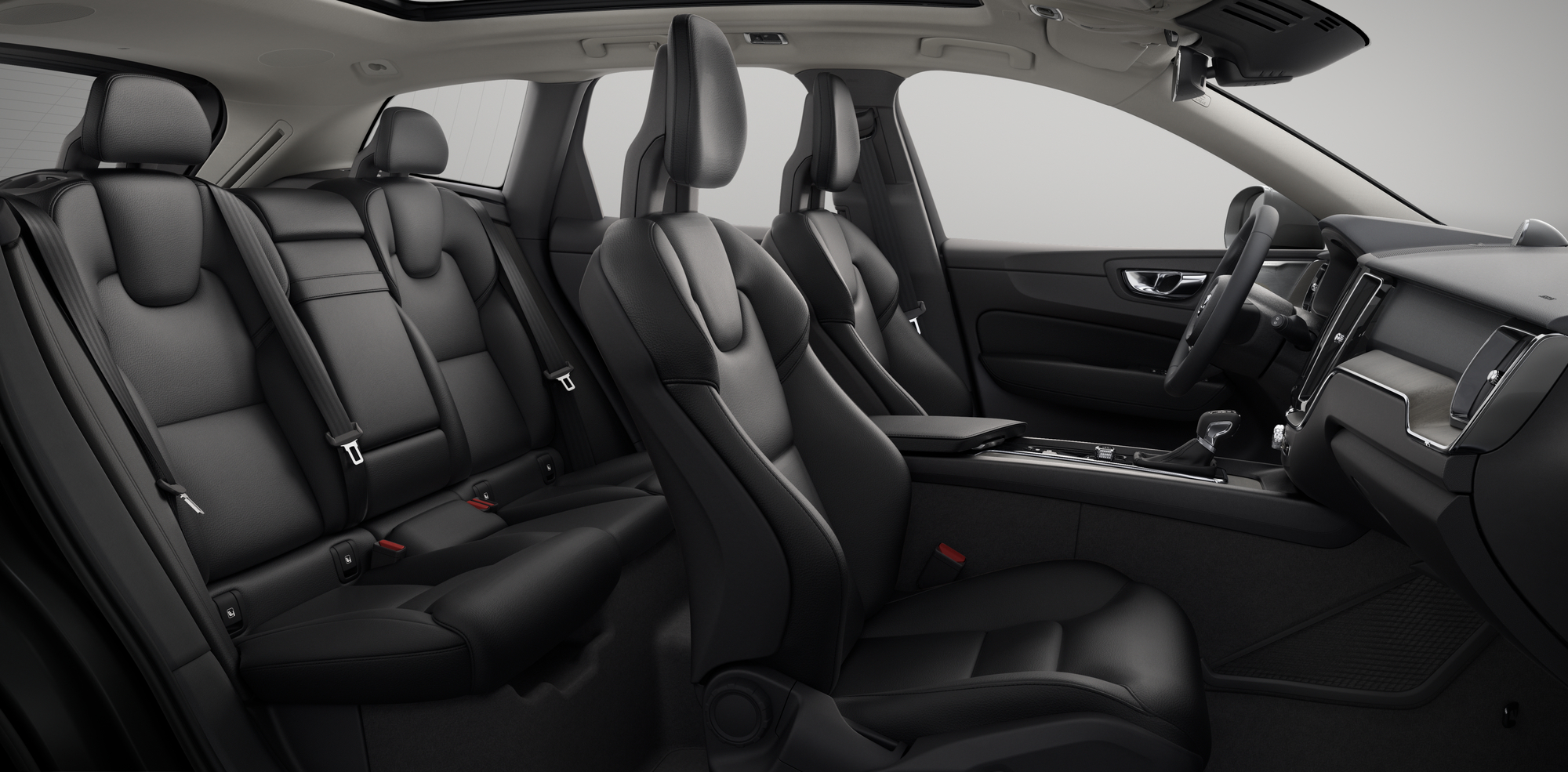 Here’s the breakdown of the pricing for the locally-assembled XC60 (on-the-road without insurance, including all applicable taxes):
Here’s the breakdown of the pricing for the locally-assembled XC60 (on-the-road without insurance, including all applicable taxes):
 Customers are free to choose from five exterior colour options which includes Ice White, Bright Silver, Osmium Grey, Onyx Black and Maple Brown. In response to customer demands, Volvo Car Malaysia has also added a second leather upholstery colour for the locally assembled variant – Maroon Brown – which will complement the usual Charcoal.
Customers are free to choose from five exterior colour options which includes Ice White, Bright Silver, Osmium Grey, Onyx Black and Maple Brown. In response to customer demands, Volvo Car Malaysia has also added a second leather upholstery colour for the locally assembled variant – Maroon Brown – which will complement the usual Charcoal.
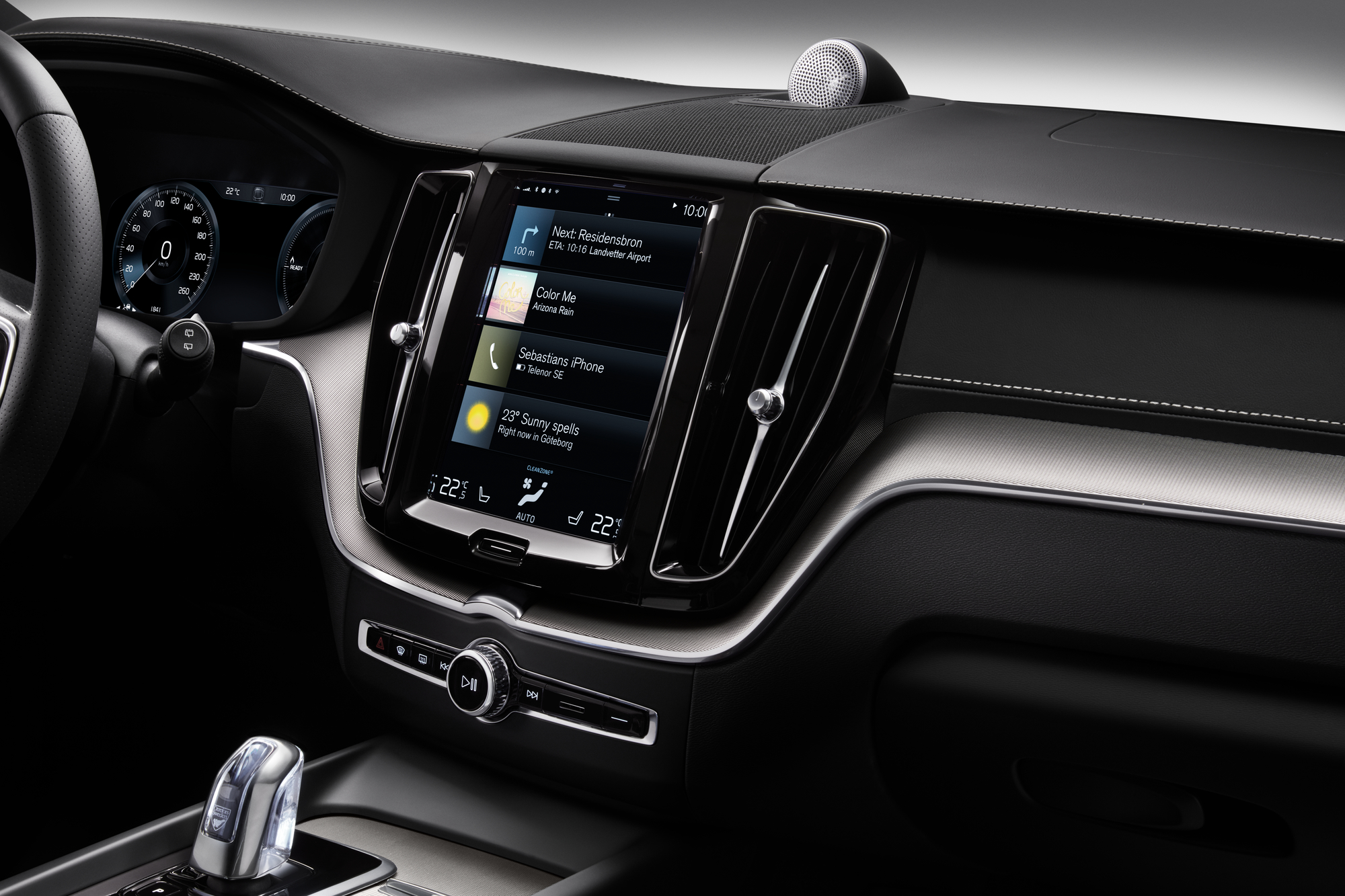 Full specifications and features of the locally-assembled XC60 variants will be revealed in the months ahead but interested customers may already place their bookings for their preferred variant, starting today, at all authorised Volvo dealers.
Full specifications and features of the locally-assembled XC60 variants will be revealed in the months ahead but interested customers may already place their bookings for their preferred variant, starting today, at all authorised Volvo dealers.
Before we go, do take a look at this amazing Volvo promo video called “Moments”… much feels. – Chris Wee.
Till we get our hands on the review unit, we’ll say goodbye for now…
Volvo XC60 Full Specs: Technical Specifications – XC60 T8 Twin Engine CBU
Volvo XC60 CKD Price List: Price List – The New Volvo XC60 CKD
Volvo XC60 CBU Price List: Price List – The New Volvo XC60 CBU
Volvo XC60 Fact Sheet: Features List (EN) – XC60 T8 Twin Engine CBU
Volvo XC60 FULL Press Release: Press Release (EN) – The New Volvo XC60
Groupe Renault has increased sales for the 5th consecutive year with 3,761,634 vehicles sold. Including Lada, The Groupe reported an 8.5% rise in global registrations (passenger cars + LCVs) in a market that grew 2.3%. The group market share now stands at 4.0% (+0.2 points vs 2016). In the LCV (light commercial vehicles) segment, the group set a new record with 462,859 registrations, a rise of 4.1% on 2016.

The Renault and Dacia brands increased sales to record levels with 2,670,982 and 655,235 vehicles sold respectively. Lada sales jumped 17.8% to 335,564 registrations, while Renault Samsung Motors sales fell 10.1% to 99,846 vehicles.

“We set a new group record with sales of over 3.7 million vehicles in 2017. We are continuing to increase sales volumes and market share across all regions. Our strategy of range renewal and geographic expansion is continuing to bring results. In 2018, we will pursue our growth and internationalization of our sales in line with the Drive The Future plan,” said Thierry Koskas, member of the Executive Committee, EVP, Sales and Marketing Groupe Renault.

In Europe, in a market that grew 3.3%, group registrations rose 5.6% to 1,911,169 vehicles. The group took a 10.8% share of the European market, up 0.2 points. The Renault brand alone saw sales rise 3.7% for a market share of 8.2%. Renault sales were buoyed in particular by the complete renewal of the Megane family in 2016, and the launch last June of new Koleos. Clio remains Europe’s second best-selling vehicle, while Captur is the number-one crossover in its class.

Electric Dreams – In the electric vehicle segment, Renault maintained its leadership with a market share of 23.8%. Sales volumes increased 38%. Registrations of ZOE, Europe’s top-selling electric vehicle, rose 44%. Even before the launch of new Duster at the very start of 2018, the Dacia brand set a new European sales record with 463,712 registrations (+11.7%), and market share of 2.6%, a rise of 0.2 points. The rise is linked primarily to the strong results of Sandero phase 2, launched at end-2016.

Outside Europe, the group increased volumes and market share across all regions. Group registrations rose 11.6% in a market that grew 3.3%. Sales outside Europe now account for 49.2% of the total. Groupe Renault consolidated its positions with the success of its new range: Renault Kaptur, LADA Vesta and LADA XRAY in Russia, Koleos in China, Megane Sedan in Turkey, Duster Oroch and Kwid in the Americas.
Over on this side of the globe, In the Asia Pacific region, registrations increased 17.0% in a market that expanded 2.7%. In China, Renault sold over 72,100 vehicles compared with 35,278 in 2016, thus doubling sales volumes in the space of one year. New Koleos consolidated its success with over 43,400 registrations. In India, Renault continues to rank as the number-one European car brand with market share of 3.1%. Sales fell 14.9% pending the ramp-up of Captur.
2018 Market Outlook for Groupe Renault – In 2018, the global market is expected to grow 2.5% vs 2017. The European market is expected to expand 1% with an increase of 1% for France. At international level, Brazil is expected to expand by 5% and Russia close to 10%. China is expected to grow by 5%, and India by 6%. Against this backdrop, the group is expected to reap the benefits of range renewal across all regions in 2018 and to pursue growth2 in sales, driven by international markets, in connection with the new Drive The Future plan.
For the FULL listing of Global Renault 2017 Sales, click here: Global News Release_A new sales record for Groupe Renault
1At constant scope
2At constant scope
© Copyright – Piston.my 2024 Trademarks belong to their respective owners. All rights reserved